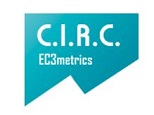Submissions
Submission Preparation Checklist
As part of the submission process, authors are required to check off their submission's compliance with all of the following items, and submissions may be returned to authors that do not adhere to these guidelines.- The submitted manuscript is an original work and it is not being considered elsewhere for publication.
- The submitted file is in Word format.
- Whenever possible, URL addresses for references are provided.
- Line spacing is simple; the font is 12 pt; italics, no underlining (except for URL addresses); all images, figures and tables are placed in their proper place, not at the end.
- The text is presented according to the stylistic and bibliographical requisites, summarized in the Author Guidelines.
Author Guidelines
Arbitration system:
Manuscripts go through a peer-reviewed double-blind process. If there is disagreement between the first two reviewers, the manuscript is sent to a third one. Reviewers are external to the journal. Within two months after reception of the manuscript authors will receive a justified admission or rejection of their work. If the article requires changes before publication, authors will have three weeks to submit the revised version. Author could appeal to the Editorial Board, which have the last decision about publications.
1. Editors
- Publication decision: the editors will guarantee the selection of the most qualified experts to get a critical assesment of the work, with the less narrowness possible.
- Honesty: the editors evaluate the articles for publication only based on its contents, according to the editorial policy of the review.
- Confidentiality: all the editorial board is committed to not revealing information related to the articles recived for publication with other people except authors, referees and editors. Anonymity is practiced to preserve the intelectual integrity of the hole process.
- Conflict of interests and disclosure: publishers commit not to use in their research content of the articles sent for publication without the written consent of the author.
- Time of the editorial process: The editorial team undertakes to communicate on time the reception, evaluation and decision, correction or rejection of the works received in no more than 180 days.
2. Reviewers
- Contribution to the editorial decision: The people engaged in the evaluation of the works received must make a critical, constructive and unbiased review, in order to guarantee the scientific and literary quality in their area of knowledge.
- Time management: The reviewers commit to evaluate the works in the shortest time possible to observe the delivery deadlines, since in Scripta Mediaevalia works time must be optimized to ameliorate the editorial management. The reviewer who does not feel competent in the subject to review or who can not finish the evaluation in the scheduled time will notify the publishers immediately.
- Objectivity: The review will be as objective as possible, without mediating personal opinions about the authors. All assessments must be justified in a report. This report should be as exhaustive as possible so as to enable the authors to clearly understand the suggested modifications or corrections or, in case the work is rejected, to understand the reasons for that decision. Likewise, if there is any conflict of interest, the review of the work must be rejected.
- Confidentiality: Manuscripts are distributed anonymously. However, each manuscript assigned must be considered confidential. Therefore, these texts should not be discussed with other people without the express consent of the authors or publishers.
- Visualization of the text or Bibliographic references: The authors commit to indicate precisely the bibliographical references of fundamental works possibly forgotten by the author. The reviewer should also inform the editors of any similarity or overlap of the manuscript with other published works.
- Conflict of interest and disclosure: Confidential information or information obtained during the peer review process should be considered confidential and can not be used for personal purposes. Reviewers will review a manuscript only if there are no conflicts of interest.
3. Authors
- Originality and plagiarism: All works submitted for publication must be unpublished, that is, authors of manuscripts sent to "Communicate" assure that the work is original, that it does not contain parts of other authors or other fragments of works already published by the authors. They also confirm the veracity of the data and the results presented in the work, that they are original and that there is no plagiarism, no distortion or manipulation of the empirical data when they are used or the sources used to corroborate the hypotheses or conjectures.
- Commitment to exclusivity. Papers sent to Scripta Mediaevalia may not have been submitted simultaneously to another journal for selection. Likewise, they can not contain, even partially, results already published in other articles.
- List of sources: The author must always provide the correct indication of the sources and contributions mentioned in the article.
- Authorship: In the articles in which more than one person has contributed, the authorship should be ranked according to the responsibility and implication in their elaboration. Also, the inclusion of all persons who have made significant scientific and intellectual contributions in the development of the research and in the writing of the article must be guaranteed.
- Access and retention: The publishing team may require the authors or the data or sources on which the research is based, and may retain them for a reasonable time after publication, with the possibility of making them accessible to the publisher. In any case, for this purpose, all data must be thoroughly anonymised.
I. Submission of Manuscripts
Manuscripts submitted to Studium must be unpublished and the result of the personal intellectual contribution of the authors. Their contents will therefore be original and free from plagiarism. Sending the paper to the journal constitutes in itself a declaration of originality.
Autors must first register to submit manuscripts.
The journal accepts articles in Spanish, French, Italian, Portuguese, English and German.
The text will normally not exceed the 12.000 words, and will be in Times New Roman, font 12, single space. It will include:
- A title in English and in the language of the article.
- An abstract (120-150 words) in English and in the language of the article.
- Five keywords in English and in the language of the article.
- An author’s short bio (100-120 words) and ORCID ID, institution, city and country, or "independient researcher".
The authors will receive the edited text, for its definitive revision. They will receive one printed copy of the journal.
The opinions expressed in the articles are the authors’ sole responsibility.
II. Norms
Studium follows the APA norms for citations. Please check the Publication Manual of the American Psychological Association (7th edition) for further information about structure and contents, style, norms for tables and figures, and other citation norms. The following are just a few indications.
III. Text Composition
The title must be clear and concise. A subtitle may be added.
APA norms recommend establishing a hierarchy in the information to order the contents.
Headings will have neither numbers nor small caps.
Level 1: Centered, bold, upper and lower cases.
Level 2: Left, bold, upper and lower cases.
Level 3: Indented, bold, upper and lower cases, full stop.
Level 4: Indented, bold, italics, upper and lower cases, full stop.
Level 5: Indented, italics, upper and lower cases, full stop.
IV. Citations
A citation is the partial expression of ideas or opinions included in a text with precise reference to the source within the text itself. The APA style uses parentheses in the text instead of footnotes or endnotes, like other styles.
Quotes
When the quote contains less than 40 words it must be embedded in the text, between inverted commas and without italics. After the quote comes a full stop and the reference between brackets, including the author’s name, year and pages: (Wilkinson, 2013, p. 45).
Quotes longer tan 40 words are written apart, indented, without inverted commas and without italics. The full stop after the quote comes before the reference.
Paraphrase
In a paraphrase the author states another’s ideas in his/her own words. This kind of citation includes name and year of publication.
Rules according to number of authors
Two authors: authors’ names are separated by the ampersand (&).
Three to five authors: all authors’ names are cited the first time; thereafter, only the first name is given, and et al is added, followed by a full stop: (et al.).
Six or more authors: the first name is given, followed by et al., already in the first citation.
Corporate author: the complete name of the organization is given the first time, adding the initials; thereafter, only the initials.
V. Bibliographical References
References are a list with the complete information of works cited in the text, in order to identify and retrieve them in case it is necessary. A reference list includes only the sources used, whereas a bibliography cites works that provide background or are useful for further reading. Therefore, only works cited in the text will be included. The list is organized in alphabetical order and with French indentation. The entries corresponding to the same author will be ordered by year of publication, earlier first. Issue and volume numbers or periodical publications will be given with Arabic numerals.
Example:
Plantinga, A. (1991). Actualism and Possible Worlds. En M. J. Loux (Ed.). The Possible and The Actual (pp. 253-273). Cornell UP.
Short references, like biblical references, will be put within the text between brackets.
Long references (monographs, articles, etc.) will be put in footnotes, according to the following rules.
Monographs
Name, A. A. (Year). Title. Publisher.
Example: Plantinga, A. (1976). The Nature of Necessity. Clarendon Press.
Book chapters
Name, A. A. & Name, B. B. (Year). Chapter title or entry. In A. A. Name (Ed.), Book title (pp. xx-xx). Publisher.
Example: Normore, C. (1982). Future Contingents. In N. Kretzmann et al. (Eds.), The Cambridge History of Later Medieval Philosophy (pp. 358- 381). Cambridge UP.
Journal articles
Name, A. A. & Name, B. B. (Year). Article title. Journal name, volume(issue), pp-pp.
Example: Suárez, R. E. (2013). La empatía en Edith Stein. Studium, 42(2), 75-96.
VI. Book reviews
The text will normally not exceed 5000 words. The review will not be published more than 3 years after the printed or digital edition of the book reviewed.
The heading will include the book details, in the following order:
Author’s first name and Name(s). Book title. City, Publisher, year, number of pages (distinguishing between Roman and Arabic numerals, asterisks, etc.), ISBN.
Example: Christoph Schönborn. De la muerte a la vida. Valencia, EDICEP, 2000, 157 pp., ISBN: 8470505874.
There will be neither subtitles nor footnotes in book reviews. The reviewed book will be quoted putting the page number between brackets: (p. xx). If other works are cited, the information will be provided within the text and between brackets.
Reviews
La Revista publica en cada fascículo recenciones relacionadas con publicaciones en Filosofía y Teología.
La edición del libro recensionado, impreso y/o electrónico, en ningún caso debe superar un máximo de tres (3) años desde su publicación.
Privacy Statement
Names and email addresses will be used for the sole purposes for which you have provided them to the journal. They will not be shared with third parties and will not be used for other purposes.
















